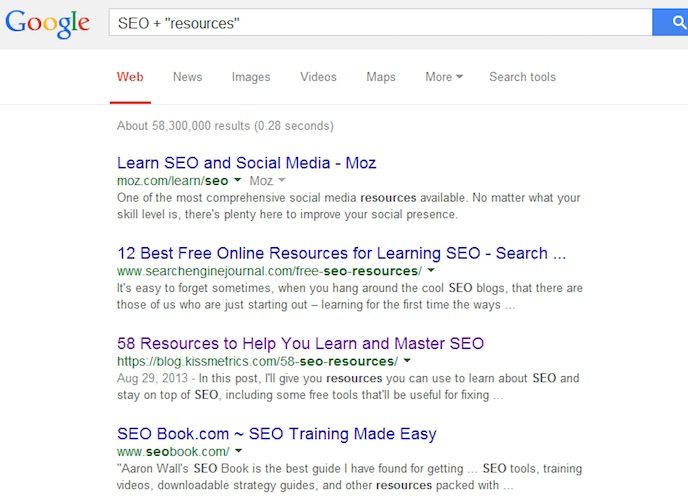Over the years, bloggers have found many creative ways to build links to boost rankings within the SERP’s. These are methods that are outside of the normal link building strategies like article directories, blog commenting, guest blogging, etc. The broken backlink method can be very difficult to utilize but if you have the knowledge, then you can use it to gain higher rankings within a very short period of time. Many people fail at leveraging this method because they focus on the wrong types of links and waste precious time that otherwise could have been used productively. With that said,
The best approach when using this method is to find resource pages or directories that provide enormous external links to other content. Why? You’re more likely to find large resource pages with broken links because they’re harder to keep updated. For example, I own a personal blog and constantly check for broken links. However, large link directories, I’ve noticed, are not that well moderated. In turn, they just rely on people like us to shoot them a quick email whenever we find a broken link on their page. However, we’ll use it to our advantage by sending them a link to replace. It’s that simple!
Let’s go through the steps in finding the right types of broken links that are full of authority and relevance.
Relevant Blogs
The first step is to find the best blogs in your niche because it’s important you find relevant links to replace. Focusing on the top blogs within your niche will ensure you find high authority links. I should mention before continuing, there are many paid tool you can use to streamline the entire process but some of them can be costly. For example, one tool I found that completely generated a solid list of relevant blogs, broken links, etc., cost roughly $69.00/mo. This isn’t too steep for those who are making money from their blog, but for those getting started, it can be money utilized somewhere else. Anyway, use the following to find the best resources online…
Here are some search strings to get you started:
- keyword + “resources”
- keyword + intitle:resources
- site:.gov keyword + “links”
- site:.edu keyword + “recommended sites”
- keyword + “related links”
In this example, I’ll use the keyword “SEOâ€. Next, I’ll head over to Google and perform the following search…
SEO + “resources”
Here are the results…

Finding Right Tools
Once you have a handful of URLs, you’ll need the right tools to analyze each of them for broken links. You can approach this in two ways. First, you simply analyze the entire domain using brokenlinkcheck.com or you can check the page by installing the plug-in “Check My Linksâ€. This plug-in is available for all browsers and will skim through the page looking for broken links. Personally, I would just analyze the current page as the search we performed in the previous step generated a handful of solid URL’s.
In this example, I’ll use the first website from the search results of SEO + “resources”. Once the page has opened, I’ll run the “Check My Linksâ€.

As you can see from the screenshot above, that “1†link is showing a 404 error. I clicked the link to make sure it is pointing to a dead page just to make sure things are going smoothly. At this point, you have to put your strategy into high gear. Before moving onto the next step, do a quick search using “Check My Links†on every URL you gathered. Then make a list of broken links that you’ll utilize in the next step.
Find or Write Fresh Content
Before you can start your outreach, it’s important you have replacement relevant content to send over. If you have a large blog, then skim through it looking for high quality relevant content that will be a great replacement for the broken link you found in the previous step. If you don’t have relevant content already published on your blog, then take some time creating an in-depth post. You want to make sure your content will be awesome and definitely worth linking out to. Here’s what you should do…
Review some of the other active links on the page and skim through their content. If they are relevant links, then they can provide insight into the type of content you should write and send over. However, here are some quick content writing tips…
- Make it in-depth
- Add images
- Make it relevant
- Solve a common problem
- Don’t forget to format
- If you can add a video
The objective is to write content that will be of value to the blogger asking for a link replacement. The better and more relevant the content, the higher chances of being accepted when you contact the blog owner.
The Outreach
You have to know that outreach is the most important aspect in broken link building. You have to make sure that you construct the perfect email so it resonates with the blog owner. To increase the chances of your link request being granted, it’s recommended to write a customized email message to each person. Why? No blog owner will grant a request if they feel it’s NOT genuine and is a generic email template. It’s recommended you speak right from the heart and tell them about the broken link on their page. Tell them you have a resource you put together that would be an awesome replacement. Try different email templates to see which one has the best approval rate. This will come in handy if you’re going to be utilizing the broken backlink strategy several times going forward.
